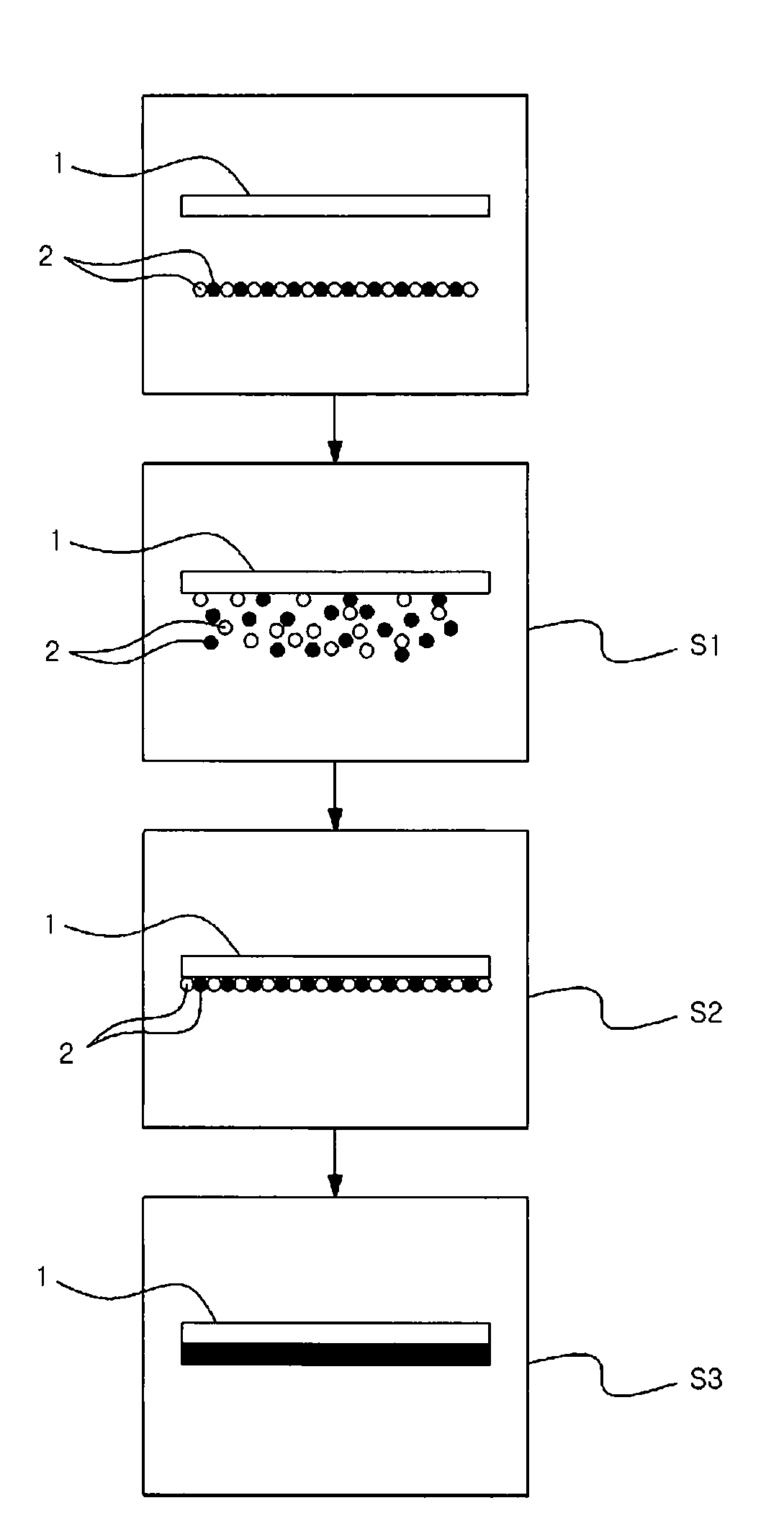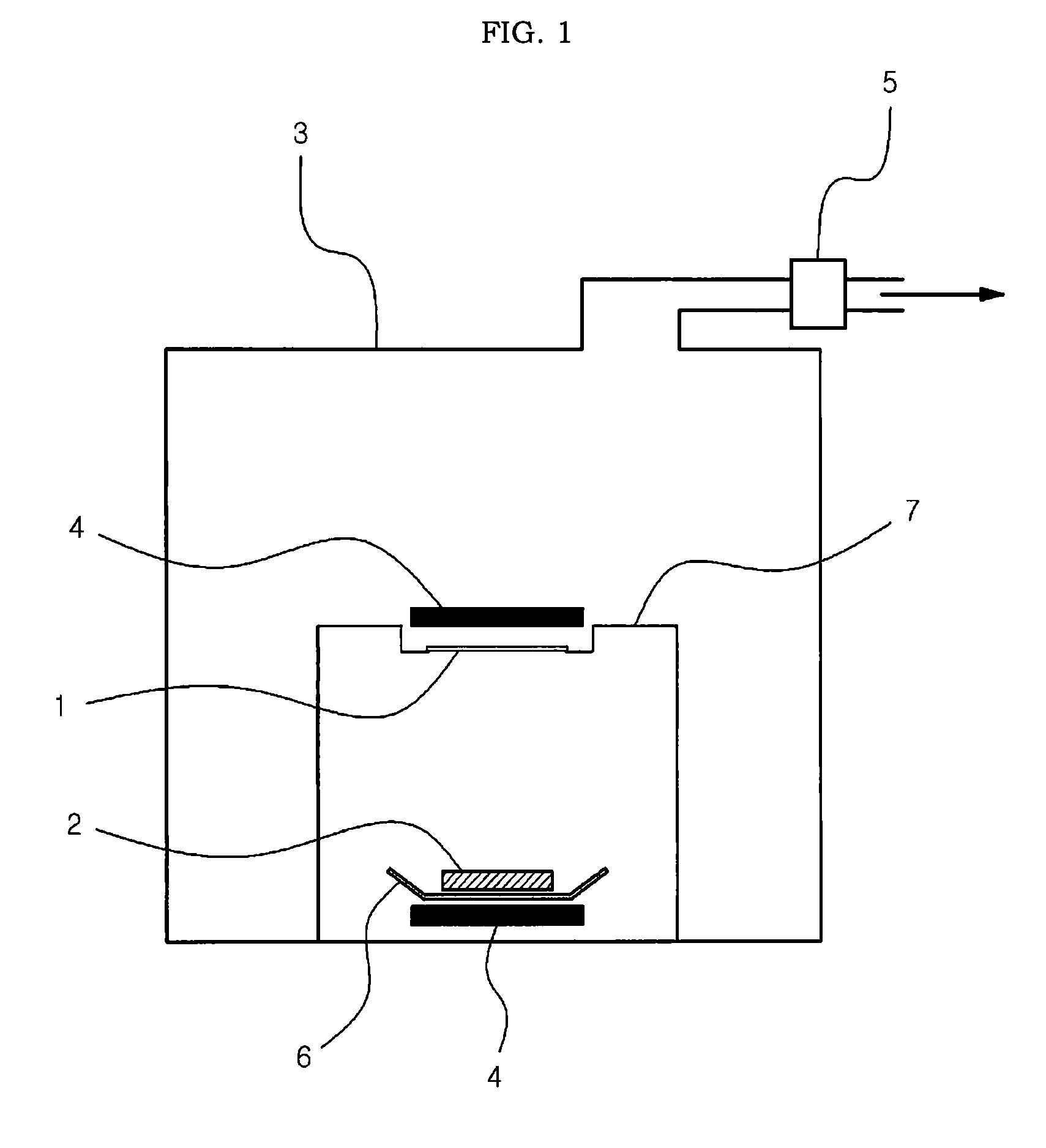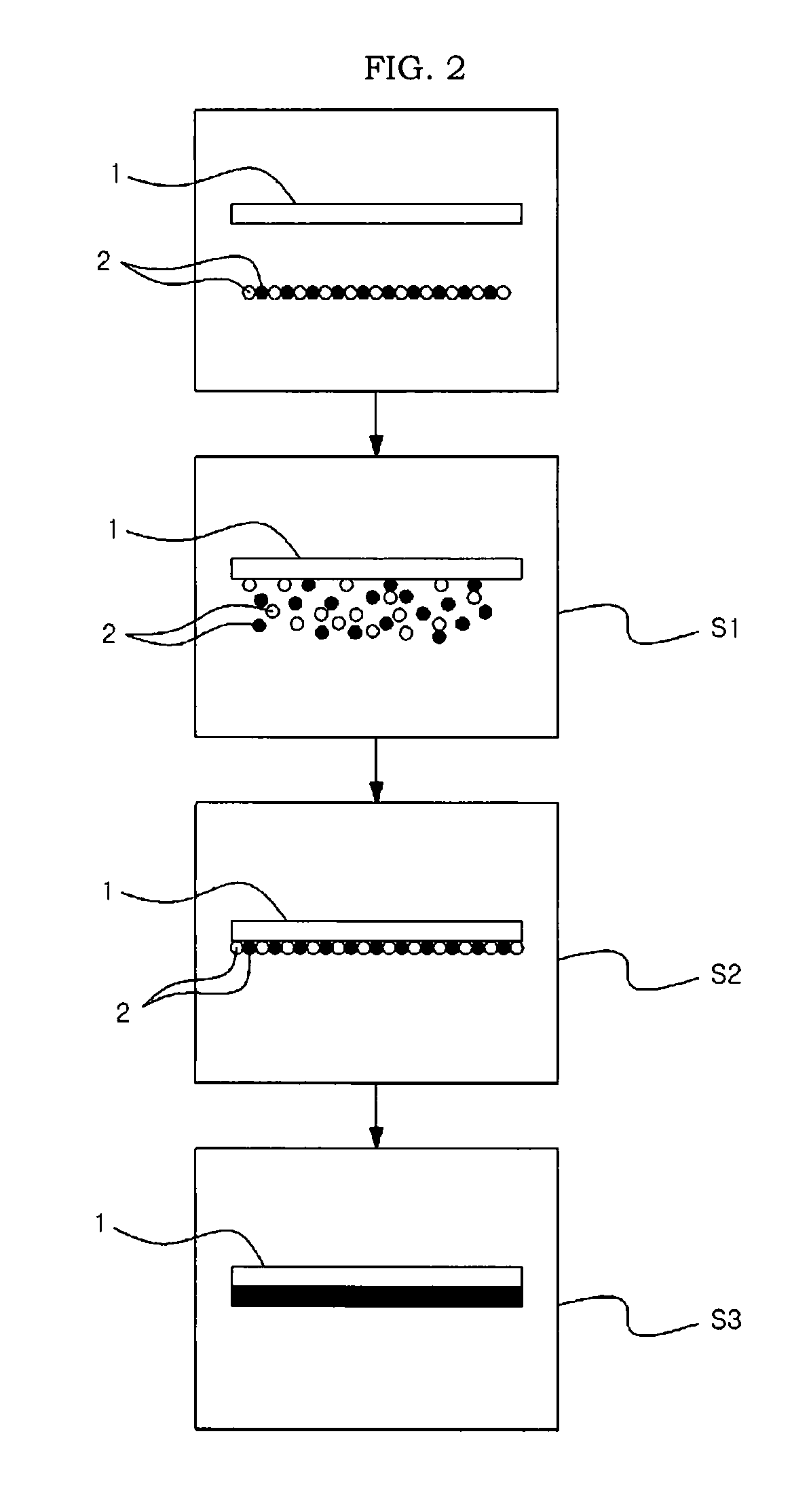Method for fabrication of thin film phosphor, thin film phosphor, and phosphor product using the same
a technology phosphor product, which is applied in the field can solve the problems of small reduction in light emission efficiency, light loss, and lowering effect of thin film phosphor, and achieve excellent transmission rate, light emission properties, and reduced manufacturing costs.
- Summary
- Abstract
- Description
- Claims
- Application Information
AI Technical Summary
Benefits of technology
Problems solved by technology
Method used
Image
Examples
example 1
Zn2SiO4:Mn2+ Thin Film Phosphor
[0075]ZnO and MnO as a raw material and an amorphous quartz substrate are placed in a chamber of an electric furnace. After exhausting the chamber, a ZnO and MnO power mixture is subjected to gas diffusion and reacts with the amorphous quartz substrate while heating the chamber. The treated material as a sample is naturally cooled and completed into a final Zn2SiO4:Mn2+ thin film phosphor.
[0076]In this case, an initial combination pressure inside the chamber ranges from 10−2 to 10−4 Torr and a temperature thereof ranges from 1,000 to 1,200° C. Also, the combination time ranges from 6 to 24 hours. While altering such combination conditions, the thickness of the thin film phosphor (a thickness of the phosphor from an original surface of the substrate before combination) was tested. Tested results are shown in the following Table 4.
[0077]
TABLE 4Thickness of phosphor layer from original surface ofsubstrate based on different combination conditionsCombinati...
example 2
BaSi2O5:Eu2+ Thin Film Phosphor
[0091]BaO and Eu2O3 as a raw material and a quartz substrate are prepared and a green emitting BaSi2O5:Eu2+ thin film phosphor is fabricated according to the same procedures in Example 1.
[0092]In this case, after exhausting the chamber under a pressure of 10−4 Torr, the raw material is diffused in a gas state into at 1,200° C., followed by conducting reaction of the raw material with the substrate for 6 hours. Then, the treated material is naturally cooled and completed into a final thin film phosphor.
[0093]The obtained thin film phosphor has a thickness of 3 μm and a relative luminance of 86% in comparison to a powder phosphor.
example 3
ZnAl2O4:Mn2+ Thin Film Phosphor
[0094]ZnO and MnO as a raw material and a sapphire (Al2O3) substrate are prepared and a green emitting ZnAl2O4:Mn2+ thin film phosphor is fabricated according to the same procedures in Example 1.
[0095]In this case, after exhausting the chamber to a pressure of 10−2 Torr, the raw material is diffused in a gas state into at 1,000° C., followed by conducting reaction of the raw material with the substrate for 6 hours. Then, the treated material is naturally cooled and completed into a final thin film phosphor.
[0096]The obtained thin film phosphor has a thickness of 2 μm and a relative luminance of 80% in comparison to a powder phosphor.
[0097]2) Second Combination Process
[0098]In contrast to the foregoing first combination process, a second combination process of forming a raw material on a substrate according to the present invention includes depositing the raw material on a surface of the substrate then heating the substrate having the raw material depos...
PUM
| Property | Measurement | Unit |
|---|---|---|
| diameter | aaaaa | aaaaa |
| thickness | aaaaa | aaaaa |
| temperature | aaaaa | aaaaa |
Abstract
Description
Claims
Application Information
 Login to View More
Login to View More - R&D
- Intellectual Property
- Life Sciences
- Materials
- Tech Scout
- Unparalleled Data Quality
- Higher Quality Content
- 60% Fewer Hallucinations
Browse by: Latest US Patents, China's latest patents, Technical Efficacy Thesaurus, Application Domain, Technology Topic, Popular Technical Reports.
© 2025 PatSnap. All rights reserved.Legal|Privacy policy|Modern Slavery Act Transparency Statement|Sitemap|About US| Contact US: help@patsnap.com



